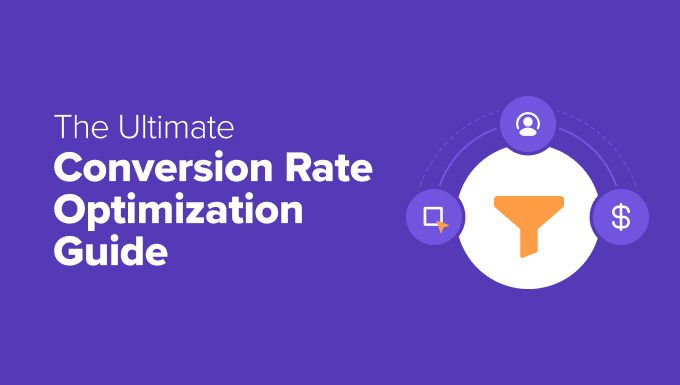Blog
My Ultimate Guide to Conversion Rate Optimization in WordPress

Understanding Conversion Rate Optimization (CRO)
Conversion Rate Optimization (CRO) is a crucial aspect of digital marketing that focuses on enhancing the percentage of visitors who engage in desired actions on your website. Whether it’s making a purchase, signing up for a newsletter, or filling out a contact form, CRO aims to maximize your site’s effectiveness in converting visitors into customers.
Why is CRO Important?
In the competitive landscape of online business, attracting visitors to your website is just the first step. The true challenge lies in converting those visitors into actionable results. A well-executed CRO strategy can significantly impact your business’s bottom line by:
- Increasing the effectiveness of your existing traffic
- Lowering customer acquisition costs
- Improving user experience
Key Metrics to Monitor
When focusing on CRO, several essential metrics can help you evaluate your website’s performance:
- Conversion Rate: The percentage of users who complete a desired action.
- Bounce Rate: The percentage of visitors who leave your site after viewing only one page.
- Exit Rate: The proportion of visitors who leave your site from a specific page.
- Average Session Duration: The average time a user spends on your site.
Tracking these metrics will provide insights into user behavior and areas for improvement.
Steps to Optimize Conversion Rates in WordPress
1. Analyze Your Current Performance
Before implementing any changes, it’s vital to understand where your website currently stands. Utilize tools like Google Analytics to assess metrics related to user behavior and conversion performance. Identify high-traffic pages with low conversion rates, as these are prime targets for optimization.
2. Simplify Your Website Design
A clean and straightforward design can significantly improve user experience. Consider the following:
- Minimize Clutter: Remove unnecessary elements that could distract visitors from taking action.
- Utilize White Space: Adequate spacing makes your content easier to read and highlights essential elements like calls-to-action (CTAs).
3. Create Compelling Calls-to-Action
Your CTAs are critical in guiding visitors toward desired actions. Follow these best practices:
- Use Action-Oriented Language: Phrases like "Get Started", "Download Now", or "Subscribe Today" are much more effective than passive language.
- Make Them Stand Out: Use contrasting colors or larger fonts to draw attention.
- Place Strategically: Position CTAs where they are most relevant; above-the-fold placement is often ideal.
4. Optimize Your Landing Pages
Landing pages are crucial for converting traffic from specific campaigns. To enhance their effectiveness:
- Focus on a Single Objective: Each landing page should have a clear and focused goal.
- A/B Test Your Pages: Regularly test different versions of your landing pages to identify which elements drive higher conversions.
5. Improve Page Load Speed
Website speed is paramount in retaining visitors. A delay in loading times can lead to high bounce rates. Use tools like Google PageSpeed Insights to identify areas for improvement. Tips include:
- Compress Images: Ensure images are optimized without sacrificing quality.
- Use Caching Plugins: WordPress caching plugins can significantly speed up your website.
6. Implement Trust Signals
Building trust with visitors is essential for increasing conversions. Incorporate elements that enhance credibility:
- Customer Testimonials: Showcase reviews and testimonials to assure potential customers of your product or service’s value.
- Security Badges: Display security certifications, especially on checkout pages, to enhance buyer confidence.
7. Leverage Social Proof
Highlighting social proof can persuade visitors to convert. Consider these methods:
- User-Generated Content: Encourage customers to share their experiences and feature this content on your site.
- Case Studies: Present detailed examples of how your product or service has solved problems for past clients.
8. Utilize Chatbots and Live Chat
Having immediate support can facilitate a smoother user experience. Implementing chatbots or live chat options allows visitors to ask questions in real-time, enhancing their experience and potentially leading to higher conversion rates.
9. Analyze and Adjust
CRO is an ongoing process. Regularly analyze the performance of your strategies and make adjustments as necessary. Keeping an eye on trends and analytics will provide insights into what works and what needs refinement.
10. Optimize for Mobile Devices
With a significant number of users accessing websites via mobile devices, ensuring your site is mobile-friendly is crucial. Use a responsive design and test your site on various devices to guarantee a seamless user experience.
11. Personalize User Experience
Personalization can significantly enhance conversion rates. Use data to tailor content, recommendations, and CTAs to individual user preferences. This could involve displaying relevant products based on past behavior or offering personalized discounts.
12. Focus on Content Quality
Quality content not only engages users but also positions your brand as an authority in your niche. Focus on creating informative, high-quality content that addresses the needs and interests of your audience.
Conclusion
Conversion Rate Optimization is a powerful tool for maximizing the effectiveness of your WordPress site. By implementing the strategies outlined in this guide, you can enhance user experience, build trust, and ultimately drive higher conversion rates. Remember, the key to successful CRO is consistent analysis and adaptation. Stay vigilant, test new ideas, and let data guide your decisions for continued improvement and success.

